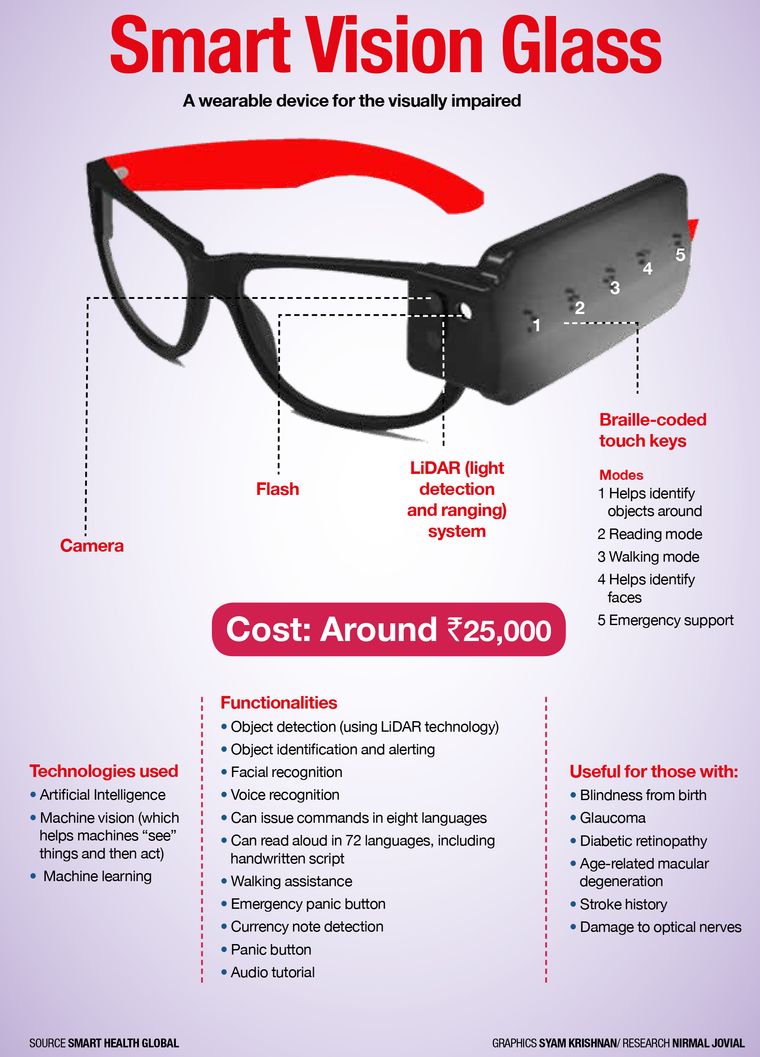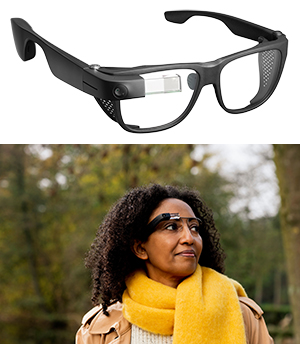Mobility Aids for Visually Impaired Users: Enhancing Independence and Navigation
Wiki Article
Enhancing Accessibility With Assistive Technology for the Blind
The combination of assistive modern technology for the blind represents an essential advancement in availability, essentially modifying how individuals browse their settings and engage with culture. From display viewers to innovative clever walking canes, these devices not just enhance freedom but likewise advertise inclusivity in numerous spheres of life. As we explore the diverse kinds of assistive tools and their concrete effect on day-to-day living, it comes to be important to examine just how recurring technological innovations are improving the landscape of support for the blind area. What ramifications do these developments hold for the future of access?Review of Assistive Modern Technology
Assistive modern technology describes a series of gadgets and software application developed to enhance the capacities of people with handicaps, consisting of those that are visually impaired or blind. This innovation plays a crucial function in promoting self-reliance and improving the lifestyle for individuals. By providing alternate approaches for accessing info and executing everyday jobs, assistive technology encourages people to navigate their settings more efficiently.
The advancement and application of assistive modern technology welcome a range of concepts aimed at cultivating availability. These principles consist of user-centered layout, which prioritizes the requirements and preferences of the individual, and the assimilation of technology right into daily tasks. Such developments make certain that assistive devices are not only functional however also user-friendly and very easy to utilize.
Furthermore, assistive innovation incorporates a diverse range of solutions, from low-tech choices like magnifiers to sophisticated developments such as display viewers and Braille displays. The continuous advancement of this field is driven by the need to attend to the one-of-a-kind challenges encountered by individuals with visual disabilities (Wearable technology for low vision). As modern technology remains to development, the possibility for enhancing access and advertising inclusivity stays encouraging, ultimately adding to a much more equitable culture

Kinds Of Assistive Gadgets
Many kinds of assistive tools are readily available to sustain people that are blind or visually impaired, each made to attend to details requirements and difficulties. These gadgets can be extensively classified into three primary types: low-tech, mid-tech, and modern services.Low-tech gadgets include items such as magnifiers, Braille labels, and responsive maps. These are reasonably straightforward devices that boost the individual's capability to communicate with their environment without requiring intricate modern technology.
Mid-tech tools usually involve advanced features, such as digital magnifiers and portable Braille note-takers. These tools can provide capabilities like speech outcome, allowing individuals to access info more successfully.

Influence On Daily Living
The schedule of various assistive gadgets dramatically enhances the lifestyle for people that are blind or visually impaired, influencing their daily living in extensive ways. By integrating innovations such as display viewers, Braille presents, and audio description services into their regimens, customers obtain greater autonomy and self-reliance. These devices promote accessibility to details, making it possible for people to perform everyday tasks, such as checking out emails, navigating public areas, and appreciating media web content.In addition, assistive tools encourage people to involve even more completely in social communications and neighborhood tasks. The capability to use mobile phones furnished with access attributes permits smooth interaction and connection with others. This connectivity fosters a sense of belonging and lowers sensations of seclusion.
In expert settings, assistive technology supports performance by permitting people to total work tasks successfully. Devices like voice recognition software and specialized magnification tools allow individuals to take part in the labor force on equivalent footing with their sighted peers.

Developments in Technology
Current technical developments have dramatically changed the landscape of tools readily available for people who are visually damaged or blind. The combination of synthetic intelligence (AI) and artificial intelligence has triggered applications that enhance navigation and object acknowledgment. Smartphone applications can now make use of AI to identify and define surroundings in real-time, giving users with useful contextual information.In addition, improvements more tips here in haptic innovation have actually caused the growth of wise canes outfitted with sensors that detect barriers and supply tactile responses. This equips users to browse their setting with increased confidence and freedom. Innovations in text-to-speech software application and braille screens have actually boosted the accessibility of digital content, enabling for smooth communication with numerous media.
Wearable modern technologies, such as clever glasses, are likewise making strides in helping visual impairment. As technology proceeds to advance, the possibility for even more transformative tools remains on the perspective.
Future Trends and Innovations
As modern technology rapidly advances, the future of assistive tools for people that are blind holds immense pledge. Developments in fabricated intelligence (AI) and artificial intelligence are positioned to reinvent the way blind customers connect with their environments. AI-driven applications are being created to boost things recognition, enabling individuals to determine and browse their environments with look at this site higher simplicity and precision.
In addition, innovations in haptic feedback technology are enabling the creation of tactile maps and navigation help that give real-time read this article details via touch. These technologies not just boost flexibility yet additionally foster self-reliance. Furthermore, wearable gadgets furnished with enhanced truth (AR) features are emerging, offering users aesthetic details via sound summaries, thus connecting the space in between the electronic and physical worlds.
Additionally, the combination of wise home innovation presents brand-new possibilities for access, enabling individuals to control their living settings via voice commands or mobile phone applications. As collaboration between technology designers and the blind neighborhood continues, the emphasis on user-centered style will ensure that future innovations are customized to satisfy the distinct requirements of this populace (Wearable technology for low vision). The trajectory of assistive modern technology guarantees a much more empowering and inclusive future for people who are blind
Conclusion
In final thought, assistive modern technology plays an essential function in boosting accessibility for individuals with aesthetic problems. Continuous developments in innovation and user-centered layout guarantee that these devices provide properly to the distinct demands of the blind community.The integration of assistive technology for the blind represents an essential innovation in access, fundamentally altering how individuals navigate their environments and engage with society.Assistive technology refers to a range of devices and software designed to enhance the capabilities of individuals with disabilities, including those who are visually damaged or blind. Wearable technology for low vision.As modern technology swiftly proceeds, the future of assistive devices for people that are blind holds enormous pledge. The trajectory of assistive innovation guarantees a more inclusive and empowering future for people that are blind
In final thought, assistive innovation plays a critical duty in improving availability for individuals with visual impairments.
Report this wiki page